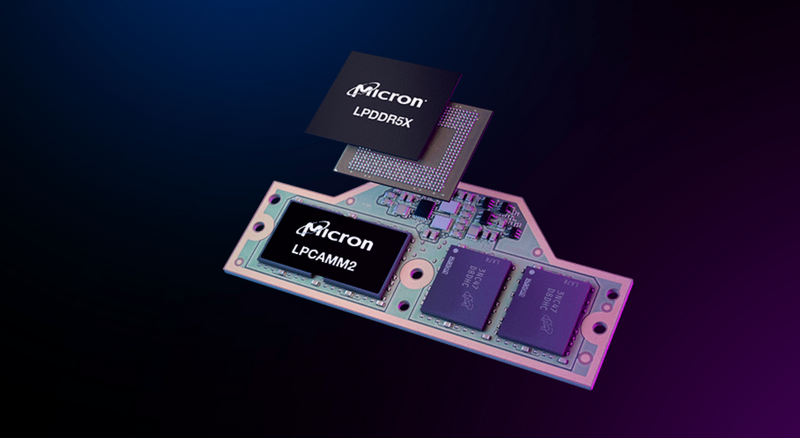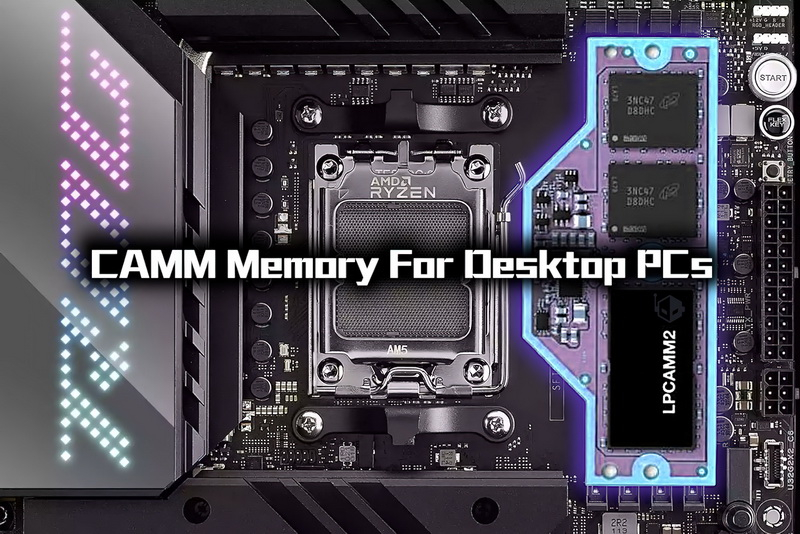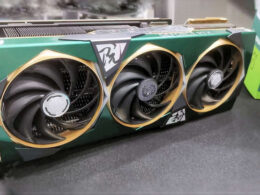In a revelation from memory market player, SK Hynix, standard modules of Compression Attached Memory Module 2 (CAMM2) designed initially for laptops might emerge in the desktop PC environment in the future. The revelation came to light at the recently held CES 2024.
The first generation of Compression Attached Memory Module (CAMM) was developed by Dell. This technology aims at replacing the traditional SO-DIMM memory modules in laptops with compact and high-density memory modules, maintaining modularity with upgrade options.
Recently, the software product standardization committee JEDEC officially adopted the specifications of a new generation of memory modules named CAMM2. The extension of this technology, LPCAMM2, was specifically designed for laptops based on LPDDR5X chips. Compared to the traditional modules, LPCAMM2 offers a 61% reduction in energy consumption and a 71% increase in performance for tasks like web browsing and video conferencing, tested by PCMark 10. LPCAMM2 also saves 64% more space than SO-DIMM.

At CES 2024, representatives of SK Hynix announced that the CAMM2 memory form would eventually be integrated into desktop PCs. They hinted at ongoing development but provided no further details. A hint at the deployment of DDR5 CAMM2 memory in PCs was also discovered in a press release by JEDEC, published in light of standard adoption.
The JEDEC organization states, “DDR5 and LPDDR5/5X CAMM2 modules are designed for different usage scenarios. DDR5 CAMM2 modules are intended for high-performance laptops and standard desktop computers, while LPDDR5/5X CAMM2 [LPCAMM2] modules are designed for a broader range of laptops and certain server market segments. Although JESD318 specifications for CAMM2 define a similar memory connector design for DDR5 and LPDDR5/X, it’s crucial to note that the pin contacts for each are different. Intentional differences in the mounting design of DDR5 and LPDDR5/X CAMM2 modules prevent the installation of an unsuitable module where it does not belong.”
The transition to DDR5 CAMM2 memory modules in desktop PCs will certainly mark a significant evolution in PC design. However, this shift requires substantial effort from motherboard developers and memory manufacturers alike.
Current consumer computer board models feature two or four DIMM connectors, supporting up to 256 GB of RAM using 64 GB modules. To incorporate CAMM2 modules, the entire PC motherboard ecosystem must be entirely redesigned. Reprogramming features such as high-speed memory overclock, customization, and support for OC profiles in Intel XMP and AMD EXPO ecosystems will need further modification by manufacturers. This work will require a great deal of time. Hence, an immediate shift to CAMM2 format memory in PCs is not expected in the near future. Furthermore, the CAMM2 technology remains relatively new and is yet to establish its market presence.





